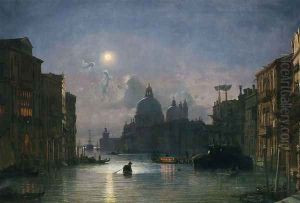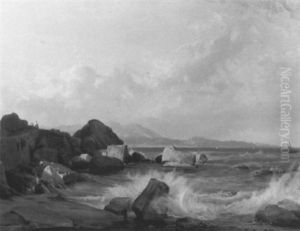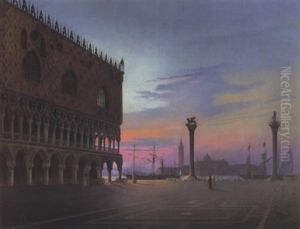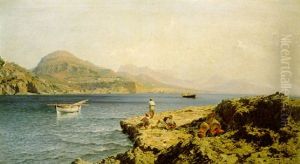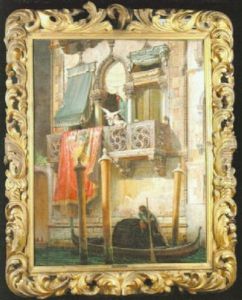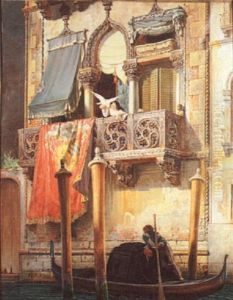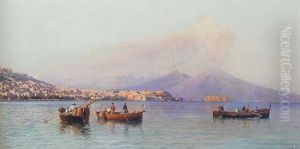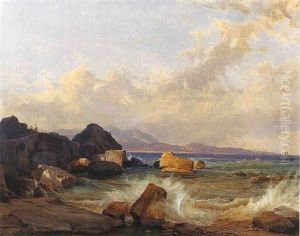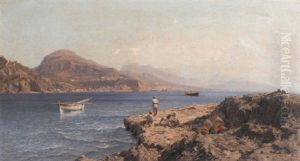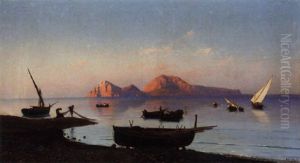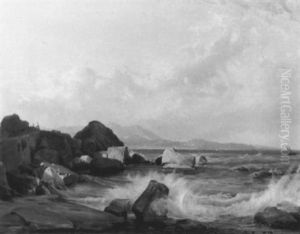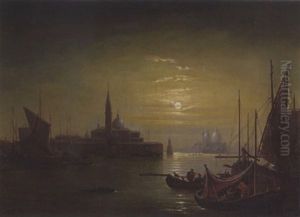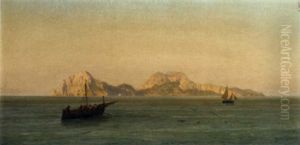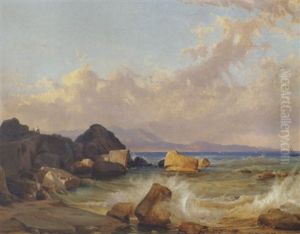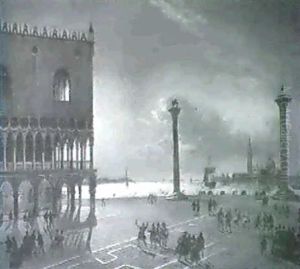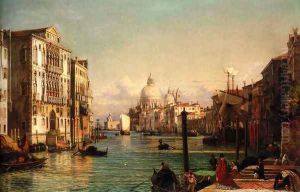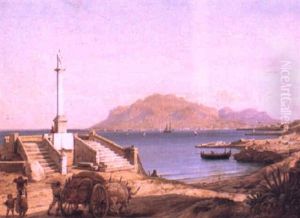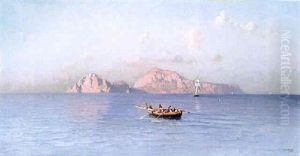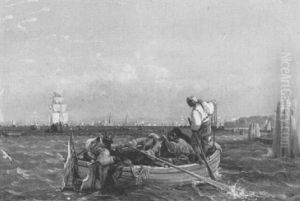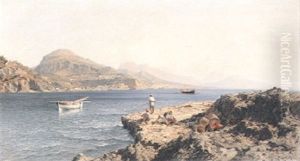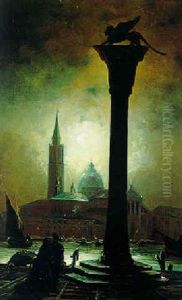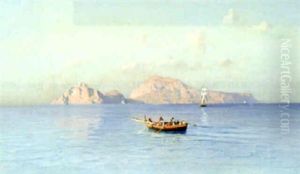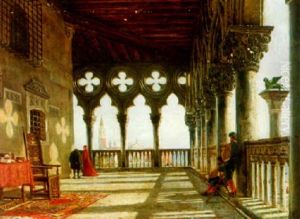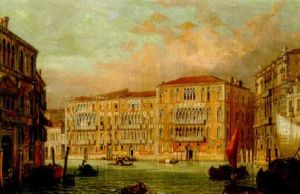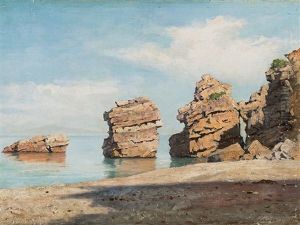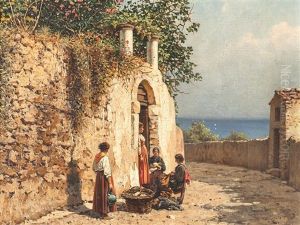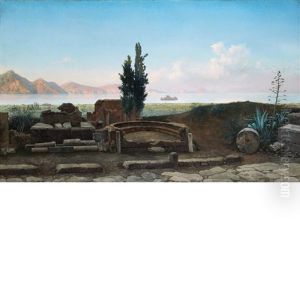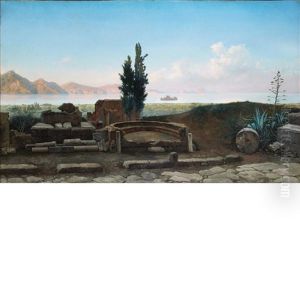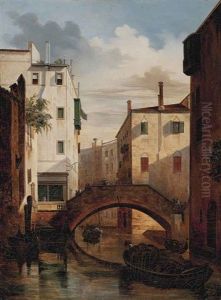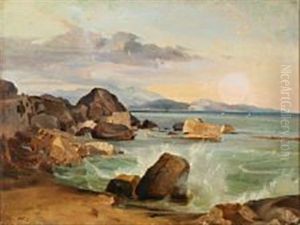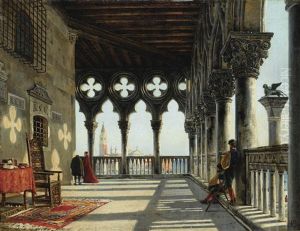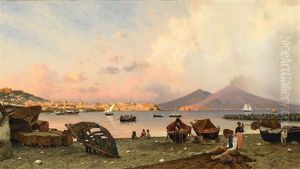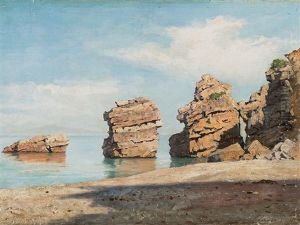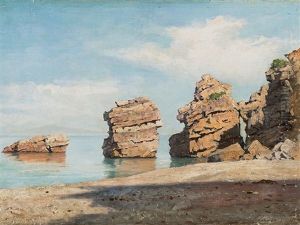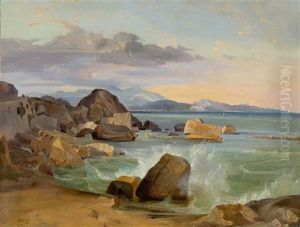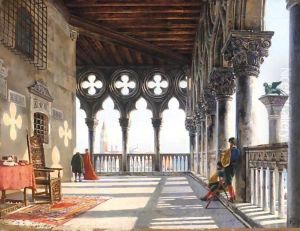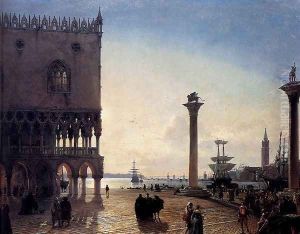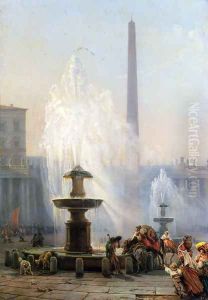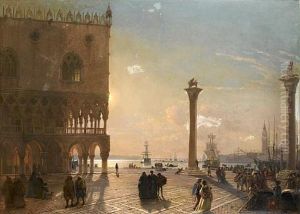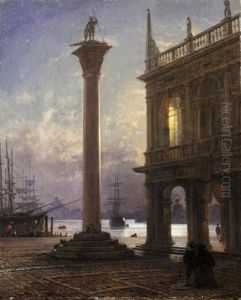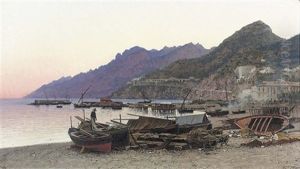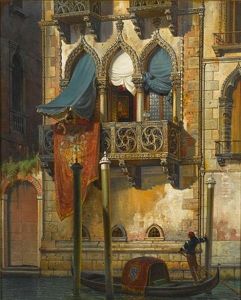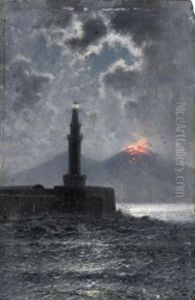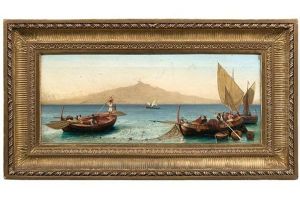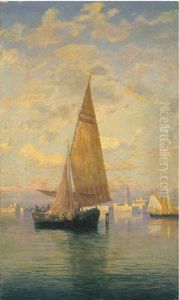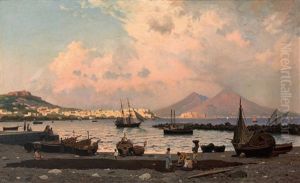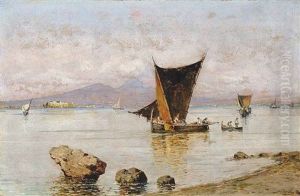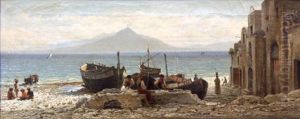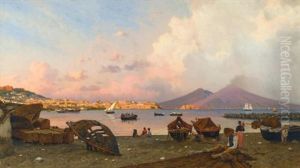Friedrich Nerly the Younger Paintings
Friedrich Paul Nerly, commonly known as Friedrich Nerly the Younger to distinguish him from his father, Friedrich Nerly the Elder, was a German-Italian painter born in Erfurt, Germany, in 1842. He was part of a lineage of artists, with his father being a well-known landscape painter of his time. The younger Nerly is particularly celebrated for his marine and Venetian cityscapes, embodying the transition from Romanticism to Impressionism within his works. His style is characterized by a meticulous attention to the effects of light and atmosphere, a trait that made his depictions of Venice especially admired.
Nerly spent a significant portion of his life in Italy, where he moved with his family in 1858. They first settled in Venice, a city that would become the younger Nerly's lifelong muse and the subject of many of his most famous paintings. His fascination with Venice's unique light, its grand architecture, and its bustling canals is evident throughout his oeuvre. In 1882, he moved to Florence, further immersing himself in the Italian landscape and culture, which continued to influence his work profoundly.
Despite his German origins, Nerly's art was deeply rooted in the Italian tradition, reflecting the beauty and ephemeral qualities of Italian cityscapes and seascapes. His works often conveyed the transient effects of light with a precision and delicacy that linked him with the Impressionist movement, although he maintained a distinct style that was less about capturing a fleeting moment and more about imbuing his canvases with a timeless, ethereal quality.
Nerly's contributions to art were recognized in his time, and he enjoyed considerable success. He exhibited his works in various important exhibitions across Europe, gaining acclaim and the patronage of notable collectors. His paintings today are held in several prestigious collections and museums, testament to his enduring appeal and the significant place he holds in the transition of European art towards modernism.
Friedrich Nerly the Younger passed away in 1919 in Florence, Italy. His legacy is that of an artist who bridged the gap between the romantic allure of the 19th century and the emerging modernist sensibilities of the early 20th century. His body of work remains a valued chapter in the history of European art, offering insights into the evolution of landscape painting and the enduring enchantment of Italy's vistas.
